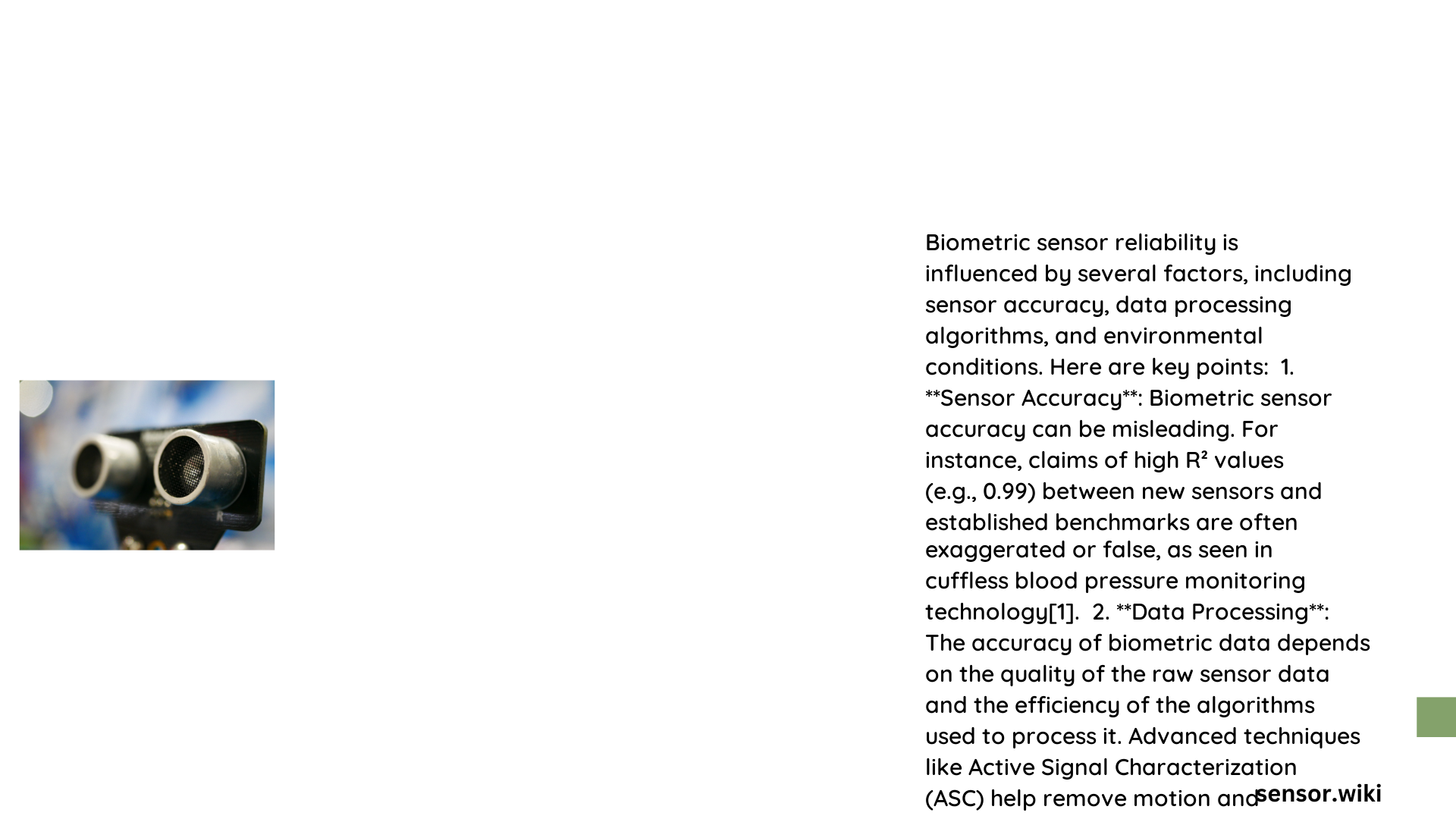Biometric sensor reliability represents a critical technological frontier where precision meets security. Modern authentication systems depend on sophisticated sensors capable of accurately capturing and verifying unique human characteristics across diverse environmental conditions. Understanding the intricate performance metrics, potential failure modes, and technological limitations is essential for developing robust biometric identification solutions that balance security, accuracy, and user experience.
What Defines Biometric Sensor Reliability?
Biometric sensor reliability encompasses multiple interconnected performance dimensions that determine the effectiveness of identification and verification systems. These dimensions include:
Key Performance Metrics for Assessment
| Metric | Description | Significance |
|---|---|---|
| False Acceptance Rate (FAR) | Probability of unauthorized access | Security Risk |
| False Rejection Rate (FRR) | Probability of legitimate user denial | User Experience |
| Equal Error Rate (ERR) | Point of balanced acceptance/rejection | System Optimization |
| Ability to Verify Rate (AVR) | Percentage of successful enrollments | System Capability |
What Environmental Factors Impact Sensor Performance?
Biometric sensors face numerous environmental challenges that can compromise their reliability:
- Temperature Variations
- Extreme temperatures can cause sensor component degradation
- Thermal expansion may affect sensor calibration
-
Performance inconsistencies in outdoor or uncontrolled environments
-
Humidity and Moisture
- High humidity can introduce electrical interference
- Condensation may disrupt sensor signal quality
-
Potential corrosion of sensitive electronic components
-
Physical Contamination
- Dirt, oils, and residues can obstruct sensor readings
- Fingerprint sensors particularly vulnerable to surface contamination
- Requires advanced cleaning and error correction algorithms
How Do Different Biometric Modalities Compare?
Fingerprint Recognition Reliability
- Average False Acceptance Rate: 0.1% – 2%
- Average False Rejection Rate: 1% – 5%
- Most mature and widely deployed biometric technology
- Highly dependent on sensor quality and environmental conditions
Face Recognition Performance
- False Match Rate: Varies between 0.5% – 3%
- Performance degrades in uncontrolled lighting conditions
- Advanced machine learning algorithms improving accuracy
Iris Recognition Characteristics
- Considered most accurate biometric modality
- False Acceptance Rate: Typically below 0.1%
- Requires specialized high-resolution imaging systems
What Technological Strategies Enhance Reliability?
- Multi-factor Authentication
- Combining multiple biometric indicators
- Reduces individual sensor reliability limitations
-
Increases overall system robustness
-
Advanced Signal Processing
- Machine learning error correction
- Dynamic calibration techniques
-
Real-time performance monitoring
-
Adaptive Sensor Algorithms
- Context-aware performance adjustment
- Automatic environmental compensation
- Continuous learning and improvement
What Are Future Reliability Improvement Directions?
- Quantum sensing technologies
- Artificial intelligence-driven error prediction
- Miniaturized, high-precision sensor designs
- Enhanced material science for sensor components
Conclusion

Biometric sensor reliability represents a complex, multifaceted challenge requiring continuous technological innovation. By understanding performance metrics, environmental limitations, and emerging technologies, researchers and engineers can develop increasingly sophisticated authentication solutions.
